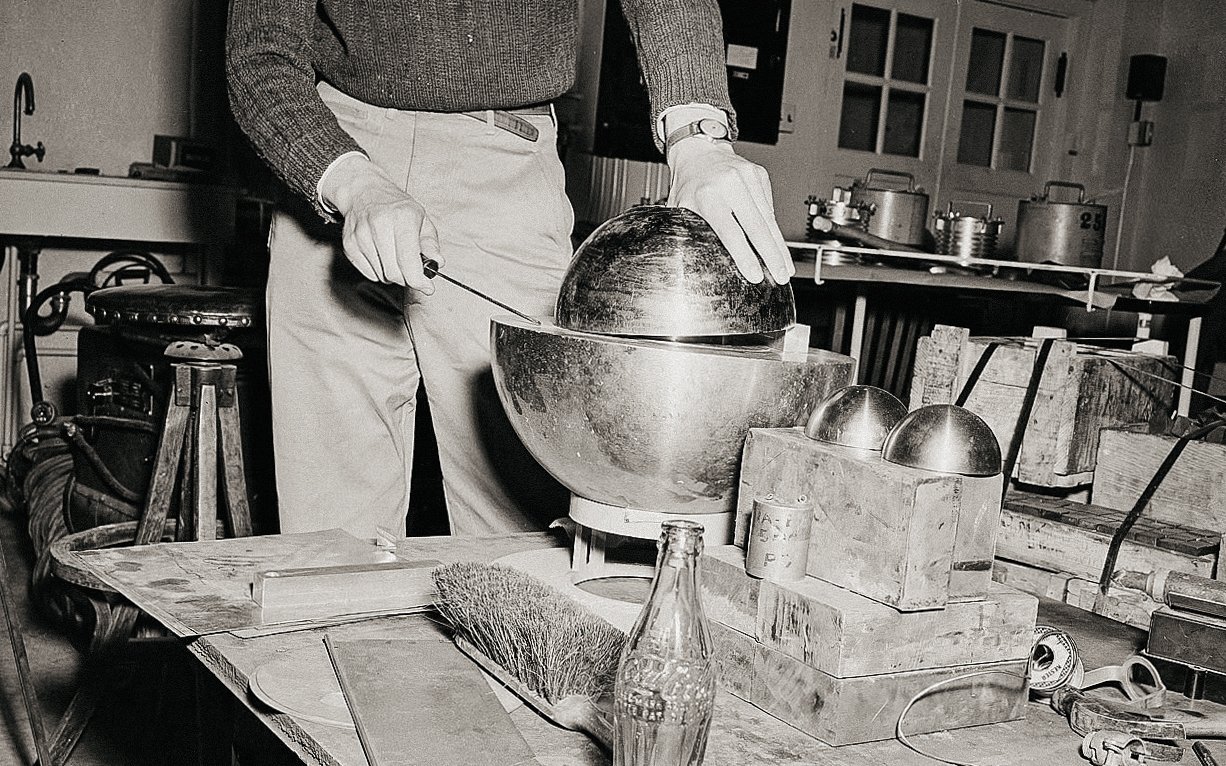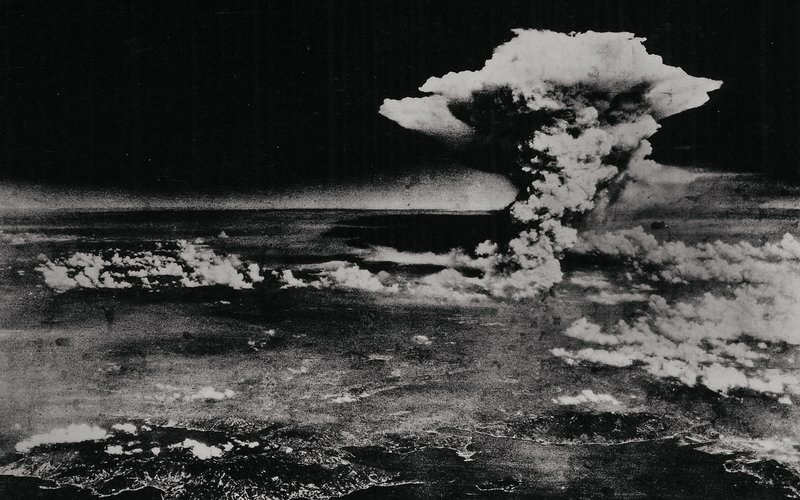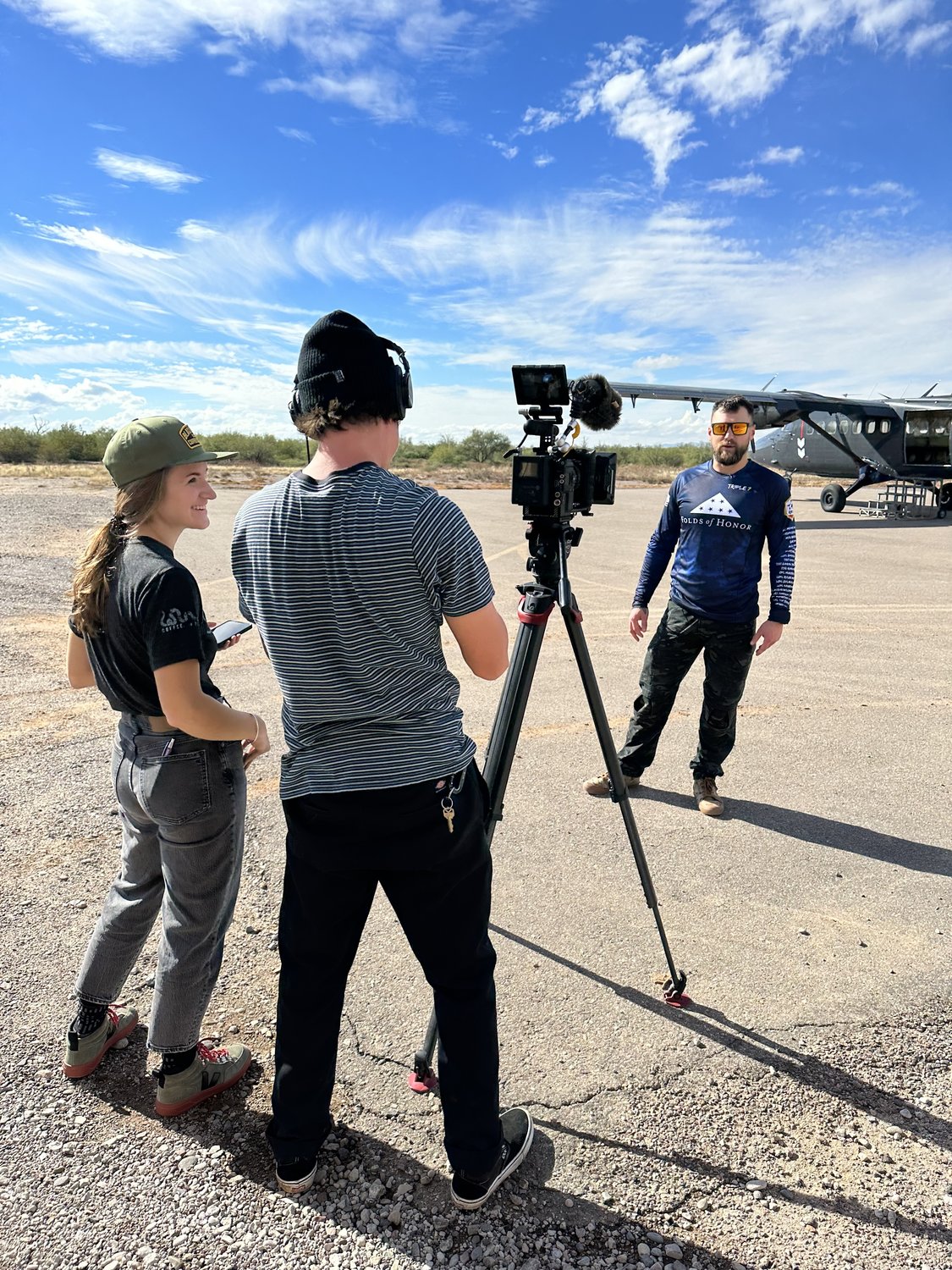
Pictured is a mockup of a May 21, 1946, criticality experiment conducted with the plutonium core that infamously became known as the “demon core.” The experiment resulted in the death of Canadian physicist and Manhattan Project scientist Louis Slotin. Los Alamos National Laboratory photo.
If you paid attention in history class or, perhaps more likely, recently watched Christopher Nolan’s magnum opus, Oppenheimer, then you know that the United States dropped two atomic bombs on Japan in August 1945. What you might not know is that another bomb was in assembly. According to historical documents, a “third shot” would have been ready to strike Japan in late August.
Mercifully, it wasn’t needed. The weapon with the nuclear kernel that became known as “demon core,” however, was still destined for tragedy.
During World War II, the US Military Policy Committee tasked the Manhattan Project’s scientists with developing not just one atomic bomb, but the means for a stockpile. As early as 1944, top brass had reasoned that dropping the first bomb would demonstrate the new weapon’s mighty power, and dropping the second would demonstrate its repeatability. Perhaps at that point, the specter of nuclear devastation would cause the Empire of Japan to surrender.

A massive cloud rises over Hiroshima, Japan, after the Enola Gay B-29 bomber dropped the “Little Boy” atomic bomb on Aug. 6, 1945. A reconnaissance plane took this photograph several hours after the initial explosion. Hiroshima Peace Memorial Museum/US Army via AP.
After two nuclear blasts and a mounting death toll, that is exactly what happened. On Aug. 15, 1945, Emperor Hirohito announced Japan’s surrender in a radio broadcast. With the end of the war, assembly was halted on the third atomic bomb destined for Japan. Just in the nick of time, the weapon’s 14-pound plutonium core, then called Rufus, was relegated to a half-life of experimentation at Los Alamos National Laboratory in New Mexico.
Unlike the atomic weapons Little Boy and Fat Man, Rufus wouldn’t go on to kill tens of thousands of people. However, the nuclear kernel was still dangerous. Within a year of Japan’s surrender, two Manhattan Project physicists, Harry Daghlian and Louis Slotin, would succumb to acute radiation sickness sustained while performing experiments with Rufus.
Both Daghlian and Slotin were attempting to bring Rufus close to critical mass by reflecting the plutonium core’s own naturally radiating neutrons back on itself. While common at the time, the hand-manipulated criticality experiments were so tricky that they were described as “tickling the tail of a sleeping dragon.” If the core accidentally reached criticality, then it would unleash a nuclear chain reaction. Which is exactly what happened in both experiments.

Slotin, center, stands with the partially assembled Gadget, the world’s first atomic bomb. Gadget successfully detonated on July 16, 1945, at the Alamogordo Bombing Range near Los Alamos, New Mexico. Los Alamos National Laboratory photo.
On Aug. 21, 1945, days after Hirohito’s surrender, Daghlian was pulling a tungsten-carbide brick away from Rufus when he accidentally dropped it directly onto the nuclear core. The plutonium instantly went supercritical. Daghlian reacted quickly, knocking away the brick to stop the nuclear chain reaction, but the young physicist was exposed to a lethal dose of radiation. He died 25 days later at 24 years old.
Nine months to the day after Daghlian’s experiment, Slotin was partially surrounding Rufus with two beryllium-coated hemispheres. To keep the domes from closing around the nuclear core, he wedged a flathead screwdriver between them. However, the tool slipped, and the domes snapped shut. A bright-blue glow illuminated the room. Like Daghlian, Slotin reacted quickly, flinging the domes away from the nuclear core, but it was too late. Slotin died nine days later at 35 years old.
After the pair of tragedies struck Los Alamos, the ill-fated plutonium kernel had earned a new nickname — the demon core — and all criticality tests at the national lab were halted.
As for the fate of the demon core itself, Los Alamos officials had planned to ship the weapon to the Marshall Islands for a series of atomic tests in 1946. Due to Slotin’s accident earlier that year, however, the plutonium was too radioactive for use. The core was instead melted down and recycled into new warheads.
Read Next: How White Sands Missile Range Launched the Atomic Age

Jenna Biter is a staff writer at Coffee or Die Magazine. She has a master’s degree in national security and is a Russian language student. When she’s not writing, Jenna can be found reading classics, running, or learning new things, like the constellations in the night sky. Her husband is on active duty in the US military. Know a good story about national security or the military? Email Jenna.
BRCC and Bad Moon Print Press team up for an exclusive, limited-edition T-shirt design!
BRCC partners with Team Room Design for an exclusive T-shirt release!
Thirty Seconds Out has partnered with BRCC for an exclusive shirt design invoking the God of Winter.
Lucas O'Hara of Grizzly Forge has teamed up with BRCC for a badass, exclusive Shirt Club T-shirt design featuring his most popular knife and tiomahawk.
Coffee or Die sits down with one of the graphic designers behind Black Rifle Coffee's signature look and vibe.
Biden will award the Medal of Honor to a Vietnam War Army helicopter pilot who risked his life to save a reconnaissance team from almost certain death.
Ever wonder how much Jack Mandaville would f*ck sh*t up if he went back in time? The American Revolution didn't even see him coming.
A nearly 200-year-old West Point time capsule that at first appeared to yield little more than dust contains hidden treasure, the US Military Academy said.












